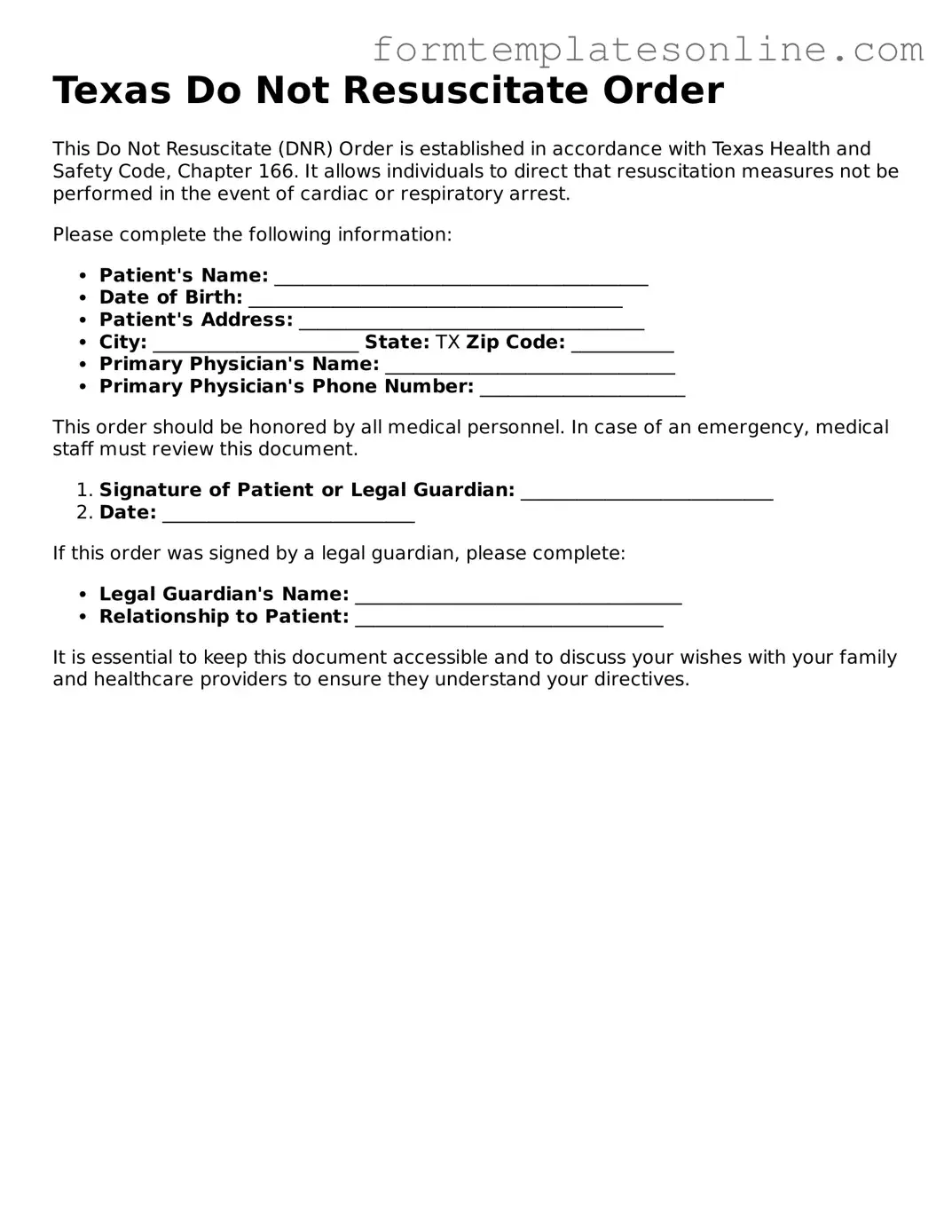Texas Do Not Resuscitate Order
This Do Not Resuscitate (DNR) Order is established in accordance with Texas Health and Safety Code, Chapter 166. It allows individuals to direct that resuscitation measures not be performed in the event of cardiac or respiratory arrest.
Please complete the following information:
- Patient's Name: ________________________________________
- Date of Birth: ________________________________________
- Patient's Address: _____________________________________
- City: ______________________ State: TX Zip Code: ___________
- Primary Physician's Name: _______________________________
- Primary Physician's Phone Number: ______________________
This order should be honored by all medical personnel. In case of an emergency, medical staff must review this document.
- Signature of Patient or Legal Guardian: ___________________________
- Date: ___________________________
If this order was signed by a legal guardian, please complete:
- Legal Guardian's Name: ___________________________________
- Relationship to Patient: _________________________________
It is essential to keep this document accessible and to discuss your wishes with your family and healthcare providers to ensure they understand your directives.
